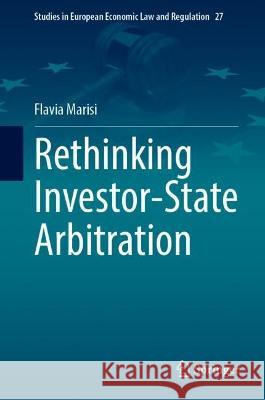Rethinking Investor-State Arbitration » książka
topmenu
Rethinking Investor-State Arbitration
ISBN-13: 9783031381836 / Angielski / Twarda / 2023
A significant increase in investor-State arbitration cases has been observed since the 2000s. The trust placed by investors and States in this method of dispute resolution stems from several strengths. In addition to its neutrality, one of the primary reasons for its widespread use is its adaptability, enabling it to address specific challenges that have emerged in recent decades. The following elements highlight this adaptability: the arbitration procedure can be customised to meet the specific needs of the disputing parties and stakeholders involved. It effectively responds to evolving cultural norms and ethical considerations, such as diversity, gender representation, corporate social responsibility, environmental issues, and human rights. Moreover, it can adapt to global health crises by facilitating online hearings. Finally, during times of international armed conflict, economic exchanges, trade, investment, and investor-State dispute settlement foster economic integration and interdependence, contributing to maintaining commercial peace and supporting international peace and security.
However, investor-State arbitration has sparked vigorous debates, with many advocating for reform in three crucial aspects: transparency, legitimacy, and consistency. Multilateral negotiations are currently underway on various fronts, including the negotiation of more sustainable investment treaties, amendments to institutional arbitral rules, the design of a multilateral investment court, and the development of enhanced policy frameworks.











